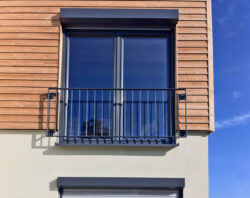Thermal insulation in the ground
Perimeter insulation is not only about the better thermal insulation of a building and the associated savings in heating costs, but is also decisive for the frost protection of the building fabric.
The thermal insulation of basement walls and floor slabs is already a demanding task for the new building, since it must withstand the pressure of the adjacent ground and, if necessary, ground water. In addition, severe tensions can arise on the earth’s surface during the winter. On account of these requirements, the perimeter insulation is generally carried out with closed-pore foam materials or foam glass panels which are glued externally onto the water-insulating layer of the building fabric.
In the case of refurbishments in the old building sector, the subsequent installation of a perimeter insulation is, of course, much more difficult, since cost-intensive earthworks are necessary here. The alternative would be a basement interior insulation, however, the dew point of the water in the area between wall and isolation shifts. To prevent moisture and mold formation from occurring at this location, a steam barrier must be installed in a complex manner.
The current regulation on energy-saving heat protection and energy-saving plant engineering for buildings (also Energy Conservation Ordinance or EnEV) requires a maximum U-value of 0.30 W / m²K for the insulation of the cellar walls. This also applies in the case of an exterior renovation of cladding, cladding, moisture barrier or drains. Frequently, masonry protection boards, which serve only the water drainage and the protection of the bitumen layer, are confused with a perimeter insulation. However, these so-called drainage plates made of open-pore foam polystyrene beads have hardly any insulating effect.


